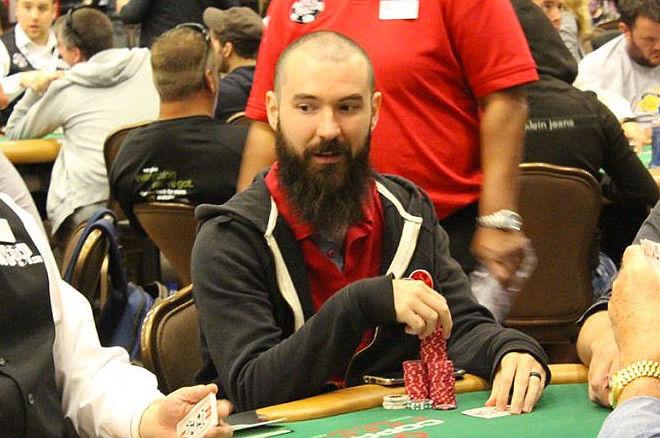James “SplitSuit” Sweeney is one of those poker gurus who can make my head hurt… in a good way. In his APT webinar last week, he examined optimal betting frequencies and value-bet-to-bluff ratios on each street. It made complete sense. Watching him wield Flopzilla to build specific pre-flop ranges to decide specific value hands and bluffs ratios is impressive. And like all good teachers, he provides a very accessible overall framework into which he fits his detail work
However, Sweeney had a similar impact on me as Alex Fitzgerald did in his APT webinar back in February. Both made me immediately and acutely aware of gaping holes in my game. Fitzgerald showed me I was not taking and holding the aggressive lead often enough. Sweeney’s webinar reinforced and extended this concept of an aggressive betting strategy. In addition to maintaining your own aggression, there are moments when calling an aggressor has value. Sweeney makes a compelling case that most players check and fold way too often. Basically, some individual actions are necessary to have an effective macro strategy.
Assumptions
Sweeney’s recommendations are based on the assumption that you are playing good players. He recognizes things break down against fishy calling stations or extreme nits. Resisting bluffing against calling stations is a longstanding fundamental that overrides other concerns. Conversely, against nits you may become even more aggressive than GTO (Game Theory Optimal) would dictate. So you can certainly vary from his recommended strategy, but as Sweeney says, at least you have a starting point. SplitSuit’s examples also assume good stack depth.
Two Basic Rules
Sweeney starts with two basic rules:
- If you bet and are called, you should usually bet again on the next street
- If you call on this round, you should usually “continue” (including betting out, raising and calling) on the next one.
These are nice clean, easy to understand fundamentals. As the in-session webinar polls of participants indicated, most of us are just not consistently that aggressive. We understand how to c-bet and raise with certain drawing hands,. We know we can not win consistently by just hoping to make hands. However, when we meet resistance, we generally drop back to what Sweeney terms “risk averse” behavior. We recall past big bluffs that went horribly wrong. Then, we recoil toward to the safer route.
But, as Sweeney says, if you fold too much, you have a problem.
Numeric Guidelines
SplitSuit guided us through three dimensions: the frequency of betting, the ratio of value bets to bluffs, and how to determine the exact combos to create these betting frequencies and ratios. He offered a couple of numeric “default” guidelines that I found helpful. First, on each street, you should be betting about 70% of the time. Second, for these bets, on the flop about 33% should be value bets and 67% bluffs; on the turn there should be a 50/50 split, and on the river 67% value bets and 33% bluffs.
It makes intuitive sense that the recommended frequency of bluffing starts higher and decreases later in the hand. This results in the frequency of big river bluffs being low compared to the number of hands originally entered. But it is worth reflecting: am I anywhere near making 1 river bluff for every 10 hands I enter? I only play live and don’t track all my hands, so I’m not sure where I am exactly. However, given that I can easily recall most of my recent river bluffs, my rate is almost certainly far lower.
Final Thought
Toward the end of the webinar, SplitSuit left us with an important guideline. When your bluff gets snapped off, and you have lost a sizable sum: learn. Don’t lament your loss and go on tilt. Instead, examine what the villain called you with and what that reveals about them as a player. Was it a strong reasonable call or a call that would usually be behind. Because most of your river bets are value bets, players calling you light is not such a bad outcome to a revealed bluff.
Sweeney provides much food for thought.
If you are interested in SplitSuit’s “One Percent Poker” course that expands on his webinar and teaches the ins-and-outs of a frequency-first strategy that your opponents simply will not beat be sure to order it using your APT Discount Code by Friday April 20th. From now through Friday the offer code APT will unlock $100 off of either the Basic or Pure editions of this course. With your offer code, you will pay only $99 for the Basic Edition which includes all the videos and extras or $299 for the Pure edition which includes a bunch of additional training materials that SplitSuit describes on his site.

